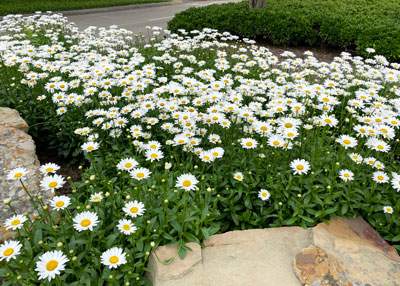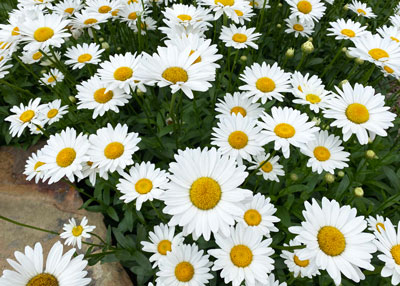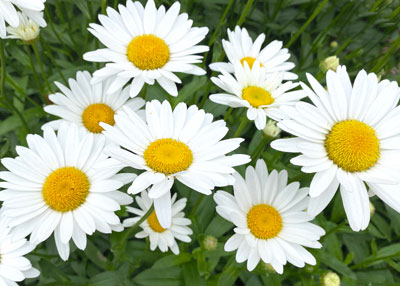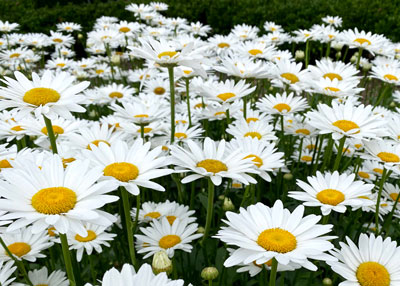Shasta daisies: May 27, 2021

It wouldn’t be late spring/early summer without Shasta daisies blooming alongside our beautiful daylilies. They’re “best buds” in thousands of Texas gardens, and with very good reason.
Chapters of books on perennials could be written about these wonderful flowers, but I’m going to compress it into the most critical pointers.

• Botanical name Leucanthemum x superbum (formerly in the genus Chrysanthemum).
• Originally bred by my hero Luther Burbank in the 1890s near Mt. Shasta in northern California. He bred in the genetics of two genera and four species.
• Many varieties have been bred and selected over the years, with a couple winning the designation of All America Selections winners.

• Mature heights 1-3 ft., depending on variety. Flowers are single, semi-double or double, depending on the variety, white with yellow centers.
• Shorter types can be used in front or middle of perennial garden. Taller types can be planted in clumps farther back.
• Full or nearly full sun. Afternoon shade in mid-summer is beneficial, but only for a few hours.

• Bloom time late spring into summer.
• Fertilize with high-nitrogen, lawn-type fertilizer (no weed-and-feed!) to keep plants growing vigorously.
• Remove spent blooms by cutting stems back into crown of foliage. That may encourage additional rounds of flowering, and it should keep the plants vigorous.
• Highly organic, well-draining soils are essential. Plants should be kept moist, but never wet for prolonged periods. Raised planting beds are ideal.
• Plants should be dug and divided every couple of years (October) to keep plantings vigorous. Rework the soil while you have the plants out of the ground, then replant them the same day. Space plants 6-8 inches apart and share extra plants with friends. Do not crowd your bed as you replant.
